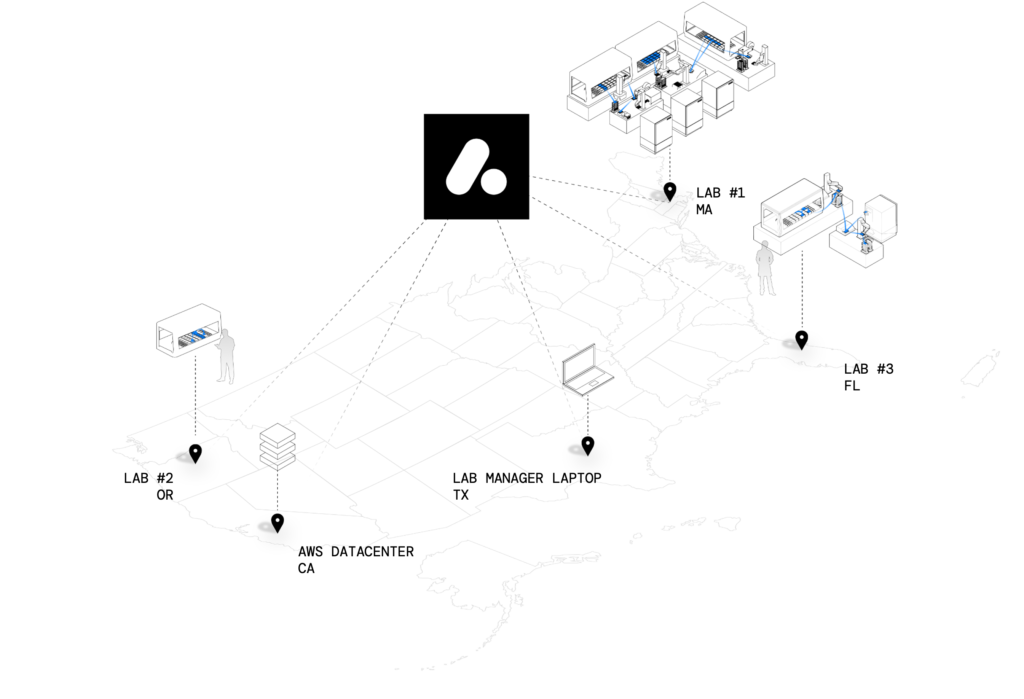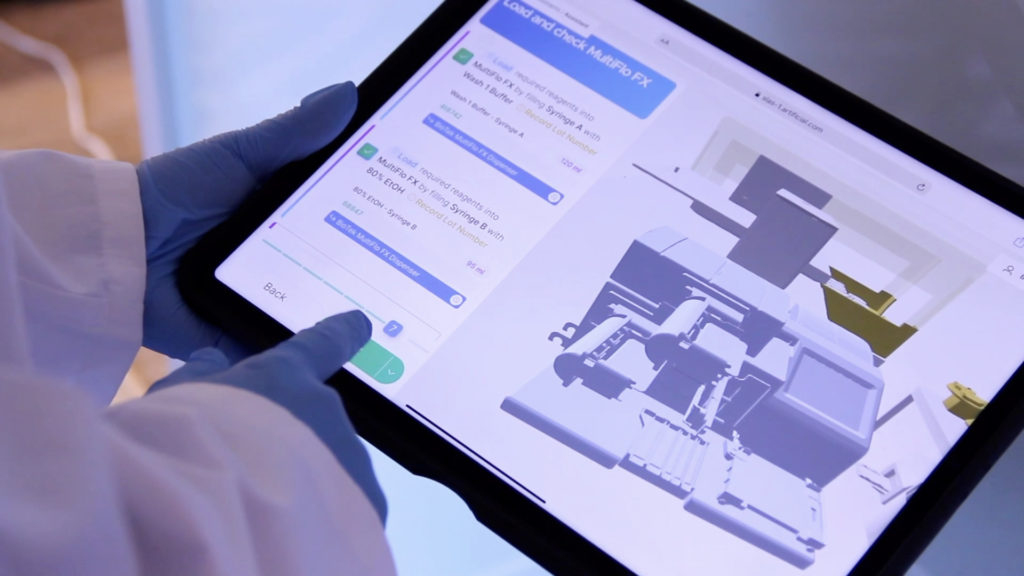The promise of AI-based, closed-loop labs has accelerated labs to digitize their operations. But, without a robust digital foundation, the journey can lead to frustrating outcomes. In this blog, Artificial Co-founder and CEO David Fuller shares the four fundamental areas that must be a part of a lab’s digital strategy to realize a digitally transformed, AI-ready lab.
The pursuit of AI-based closed-loop labs
As CTO of KUKA AG and Managing Director of KUKA Robotics, I had the opportunity to work closely with the founding thought-leaders of Industry 4.0 (I4.0.) During that time, the hype around I4.0 and the Industrial Internet of Things was on the rise. We felt that by combining the best of I4.0 with high-quality German-engineered mechatronics (robots, autonomous vehicles), we could transform the factory and warehouse automation landscape.
As Co-founder and CEO of Artificial, I see many of the same dynamics playing out in the life sciences. There is a frenzied buzz about automation, digitization, digital transformations, the Lab of the Future, and in particular, AI-based closed-loop labs. These trends were all in place with decent momentum for years and were massively accelerated by the global pandemic.
The buzz is understandable. Closed-loop labs with AI-driven software, hardware, and frankly everything is inevitable, eventually. The life sciences industry has seen strides in progress, as our COO Yvonne Linney has seen throughout her career. Still, there remain systemic gaps in the digital foundations of the lab, which often result in disappointing ends to hope-filled digital transformation journeys.
Based on my experiences in factory and warehouse automation and, more recently, life sciences automation, AI-enabled closed-loop labs with a strong digital foundation must focus on these four key areas:
1.0 Cloud-connectivity

Labs must be cloud-connected. And this means more than just wrapping a software solution in a virtual machine. In a cloud-connected lab, everything in it–including the people, instruments, software, and data–can go seamlessly from edge to cloud. Cloud connectivity means labs can remotely access their lab and coordinate work across the globe. All of a lab’s generated data can be aggregated in one place to be visualized or prepared for analytics. By becoming cloud-connected, labs can synchronize all of the critical elements of their lab so their teams can operate and collaborate no matter where they are.
2.0 Structured and standardized data models via Digital Twins
Before a lab can even start to leverage AI/ML, it must first collect, structure, and standardize its key data. Structuring data requires modeling the parameters of interest which includes not only the scientific data, but also a digital history of what people did, process data and equipment data such as uptime and availability, and as much additional relevant metadata as possible. Unless a company is lucky enough to have ample resources to standardize large datasets generated by their instruments and people, standard open APIs are required to achieve this. Once this is accomplished, labs can start to visually represent their data with a homogeneous single pane of glass despite the heterogeneous set of tools and people required to operate it.
3.0 Augmenting humans-in-the-loop

The digital experience must not be limited to a lab’s automation. Instead, it must also capture the manual steps that make up much of today’s lab operations. As a prerequisite, the manual steps in a workflow must be integrated with an automated run so when a job is scheduled, both automation and manual work are orchestrated together. Simply integrating manual tasks is insufficient to achieve a digital transformation though; manual tasks should be augmented via digital tools. Not only does this mean that these tasks become more repeatable and less error-prone, but every manual action and its metadata are automatically captured alongside a lab’s automation data.
4.0 Open, standardized APIs that connect all of a lab’s software and hardware
Complete digitization requires an API-first mentality and creating a widely adopted industry standard as the Pistoia Alliance and SiLA have sought to do. Until labs have open, standardized APIs, they will be unable to easily connect the heterogeneous and numerous sets of software and hardware they must rely on to run their experiments. Instead, if the lab’s tech stack was built on common standards, labs could start to connect their people and data together. By bringing together these critical components, labs can more quickly generate their scientific data and gain insights into their operations from a single view.
At Artificial, our mission is to deliver a single platform that helps labs achieve these four prerequisites to a digitally transformed, AI-ready lab so they can focus on their next life science breakthrough. Stay tuned to our next set of blogs to see how the Artificial Product Suite tackles each of these fundamental areas.
